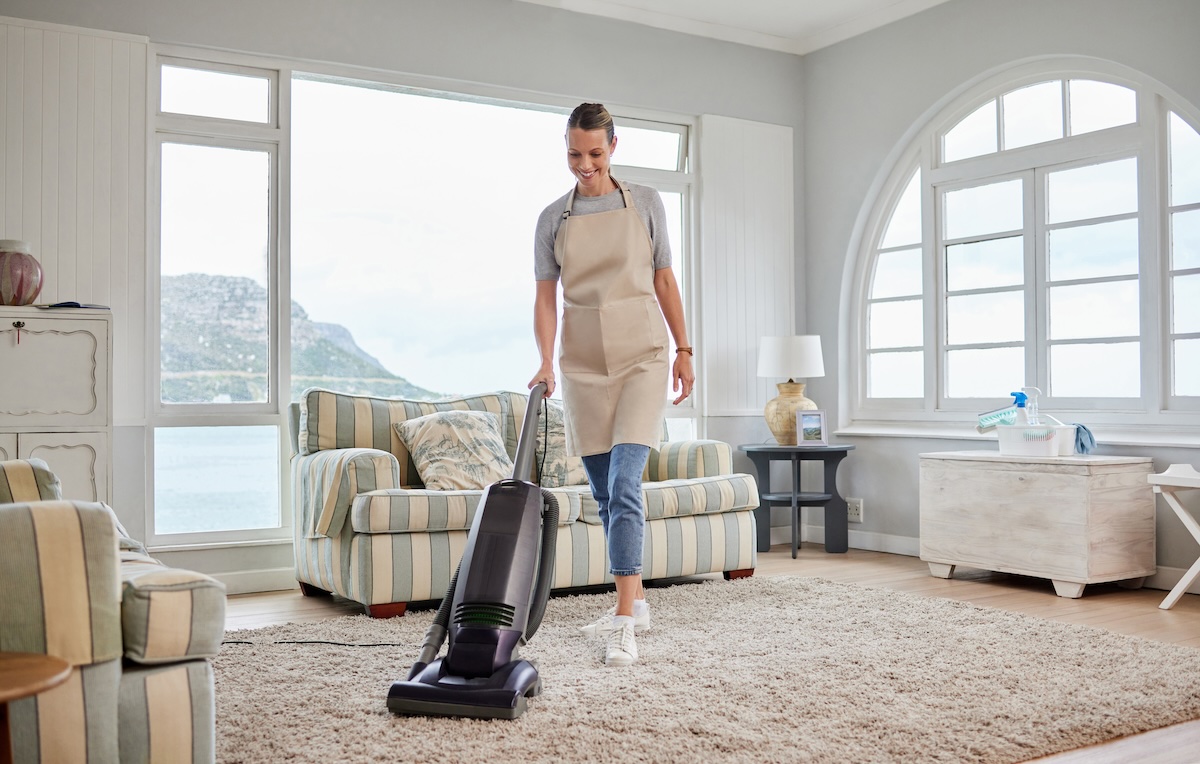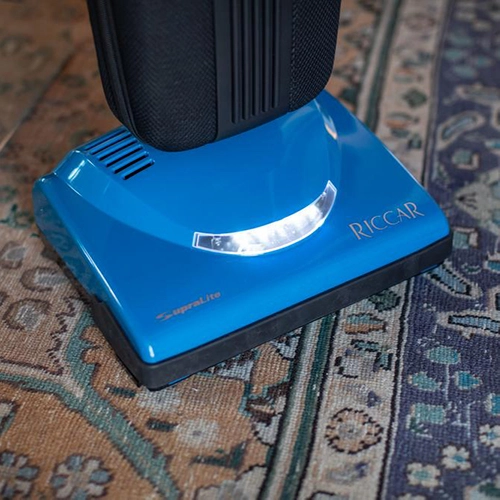Table of Contents
ToggleIf you’ve lived through a spring in Nashville, you know the scene: cars dusted yellow, noses running, and everyone joking that “pollen” is our unofficial 5th season. Music City’s allergy season is notoriously bad. It often kicks off as early as February, and can stretch well into autumn (with peaks in April, June, and September).
In fact, Tennessee frequently ranks among the “worst” states for allergy sufferers. Tree pollen in spring is the biggest offender (oak, maple, cedar, and others), blanketing the city in a fine powder that spells misery for sensitive noses and eyes.
But while we can’t control Mother Nature outdoors, we can take charge of our indoor environment.
One surprising hero in the battle against allergies is probably already sitting in your closet: your vacuum cleaner. In this guide, we’ll explore how a high-quality vacuum—especially vacuums with HEPA filtration—can be a Nashvillian’s best friend during allergy season.
Let’s get right into it—so you can start breathing easier!
Nashville’s Notorious Allergy Season: Why the Sneezes Won’t Stop
Nashville isn’t just Music City—it’s also Allergy City for many residents. Our region’s climate and greenery create a perfect storm for allergens. We enjoy mild winters and long growing seasons, but the trade-off is that plants start producing pollen early and keep it up for months.

Each spring, trees like hickory, oak, maple, and cedar release massive amounts of pollen into the air. Come late summer and fall, ragweed and other weeds join the party.
The result? Almost year-round sniffles.
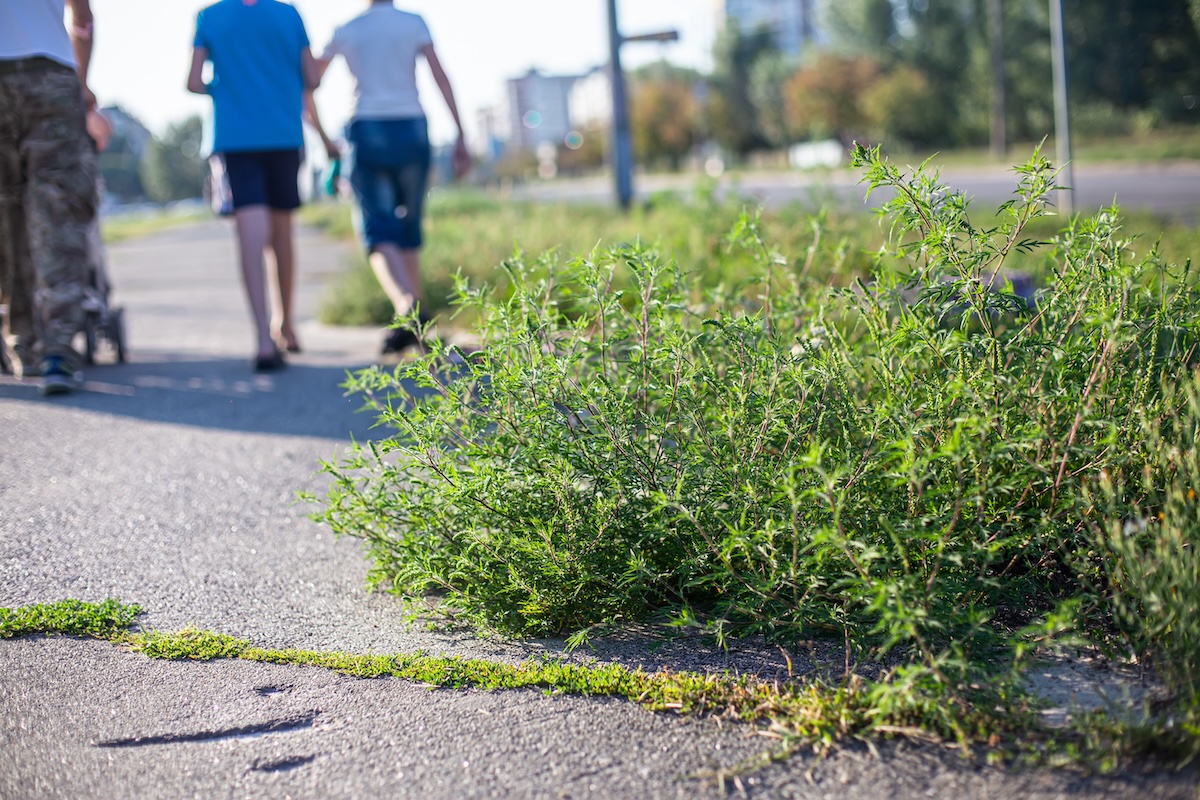
You’ve probably seen Nashville earn the label of an “allergy capital” in various national rankings. And if you’re new to Middle Tennessee, this might catch you off guard—many newcomers are shocked when their mild allergies suddenly flare up after moving here.
Why is Nashville so bad for allergies? Blame our geography and foliage. Our city is nestled in a bowl-like region, which can trap airborne allergens. We’re surrounded by forests and parks—great for scenery, not so great for allergy sufferers.

Pollen counts in spring often reach “very high” levels, triggering sneezing, itchy eyes, and congestion for thousands of Nashvillians. And it’s not just outdoor pollen: dust and mold thrive here too thanks to our humidity.
All of these allergens can make their way indoors, turning your home into a sneezefest if you’re not proactive.
How Allergens Get From Outdoors to Inside Your Home
During peak pollen weeks, it might feel safer to retreat inside. But guess what? Those tiny pollen grains often hitch a ride right in with you. Pollen particles easily sneak into houses through open windows and doors, or by clinging to your clothes, shoes, and even your hair.
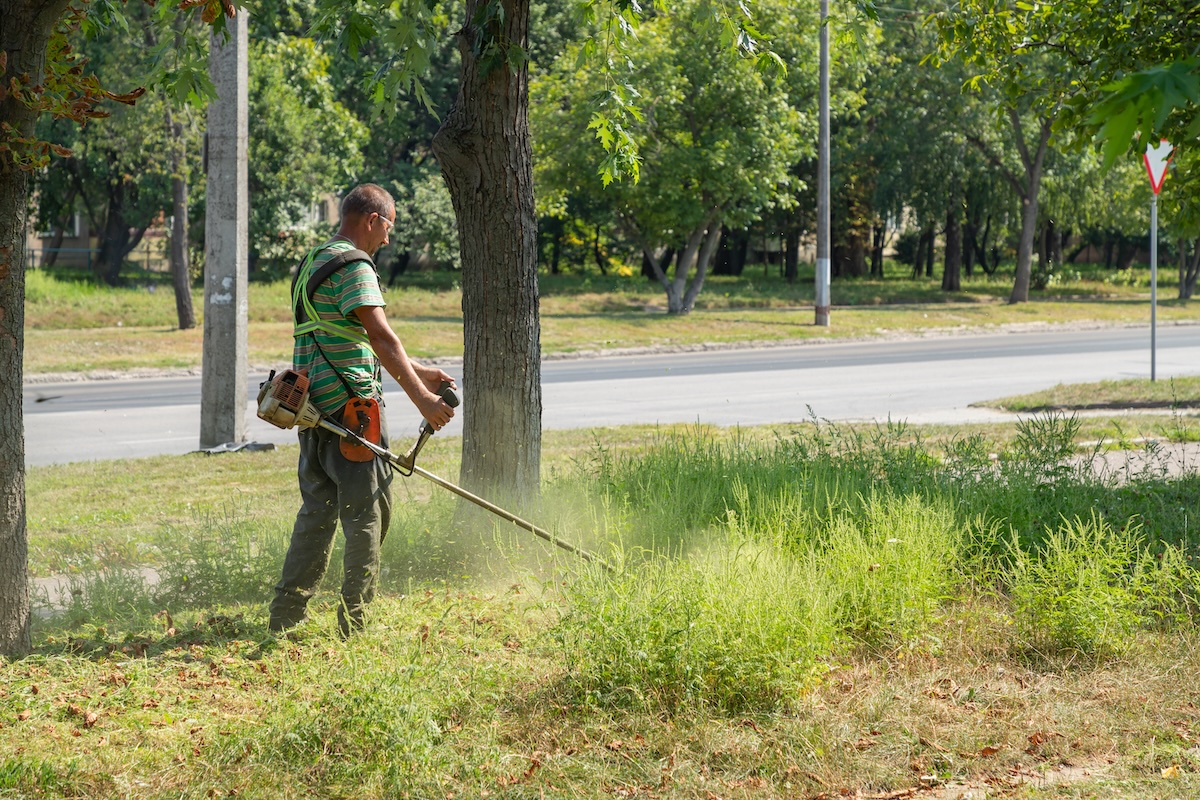
Have a dog that romps in the yard? Their fur is basically a pollen magnet. Once inside, pollen settles on your floors, rugs, and furniture, waiting to get stirred up and cause symptoms all over again.
And pollen is only part of the problem. Dust mites are another major allergen in Middle Tennessee homes. These microscopic critters live in bedding, upholstered furniture, and carpets. They thrive in our humidity and produce allergenic waste particles (yuck!) that become part of household dust.
Then there’s pet dander—tiny flakes of skin shed by cats, dogs, and other pets—which can trigger allergies year-round. If you have a pet-friendly home in Nashville, you likely have some dander in the mix even if Fido or Fluffy doesn’t go outside.

All these allergens—pollen, dust mite debris, pet dander, mold spores—collect on surfaces in your house. Every time you walk across the carpet, plop down on the couch, or draw the curtains, you might send a puff of allergens back into the air.
It’s no wonder indoor air can be 2x, 5x, or even 100x more polluted with allergens than the air outside. (Source: American Lung Association) During allergy season, what’s outside often comes inside. This is where your vacuum cleaner enters the story as a powerful ally.
The goal: Don’t let your home become a refuge for pollen and dust when it’s supposed to be a refuge from them. By understanding how to effectively vacuum and filter these allergens, you can significantly reduce your indoor exposure. In the next section, we’ll take a look at how the right kind of vacuum (and a regular cleaning schedule) can keep your Nashville home’s air cleaner, even when pollen counts are through the roof outside.
Vacuum Cleaner Tech: HEPA Filtration and Sealed Systems
Not all vacuums are created equal, especially when it comes to combating allergens. If you’re using a basic vacuum that just sucks up dirt and blows exhaust out the back, you might be doing more harm than good during allergy season.
Ordinary vacuums can spew fine particles right back into the air. Ever notice that “dusty” smell after vacuuming? That’s likely thousands of microscopic dust and pollen bits escaping the machine. We don’t want that! What we do want is a vacuum that traps allergens securely. Enter HEPA filters and sealed systems.
HEPA 101
HEPA stands for High Efficiency Particulate Air. A true HEPA filter captures at least 99.97% of particles as small as 0.3 microns. (For scale, a single pollen grain or dust mite dropping is often around 10–30 microns, much larger than what HEPA filters stop.) This means a good HEPA vacuum can suck in that sneeze-inducing pollen and dander, and keep it in the vacuum, rather than blowing it back out.
HEPA filters snag the tiniest bits of pollen, dust mite allergen, mold spores, pet dander—all the stuff that triggers allergies. The result is the air coming out of the vacuum is actually cleaner than the air going in. In effect, a HEPA vacuum doubles as an air purifier while you clean.
Sealed Filter Systems
However, a HEPA filter alone isn’t enough if the vacuum’s body isn’t well sealed. The sealed system is the unsung hero of allergy-friendly vacuums. This means every seam, seal, and connection in the vacuum is airtight, so all the air is forced through the filters, with no sneaky leaks. Even a tiny gap or crack in a vacuum can let out clouds of fine dust.
As Dyson’s engineers point out, even a pinhole leak around a filter can ruin HEPA-level filtration by letting dirty air bypass the filter. Many cheaper vacuums leak like sieves—they pick up dust, but then leak it out around the bag or filter, sending allergens right back into your home. A well-sealed vacuum, by contrast, ensures that 100% of the air (and allergens) that get sucked up actually pass through the filters before the air leaves the machine.
In practical terms, using a HEPA-filtered, sealed-system vacuum means you can capture things like spring tree pollen and dust mite particles from your floors and furniture, and keep them locked in the vacuum. You’ll vacuum up yesterday’s pollen so it doesn’t keep making you sneeze today. This can make a noticeable difference in your day-to-day allergy symptoms—less congestion in the morning, fewer random sneezing fits in your living room, and generally cleaner-feeling air in your house.
How Frequent Vacuuming Can Help You Stay Ahead of the Pollen Waves
When Nashville’s pollen counts soar, one of the smartest things you can do is vacuum more often. It’s all about staying ahead of the allergen buildup. During peak pollen season—those weeks in spring when every news station is talking about high pollen alerts—vacuuming at least once a week (and more if possible) is crucial. Why so often? Think of pollen like a fine dust that settles daily. It doesn’t take long for a fresh layer to accumulate on your floors and furniture, especially if you’re coming and going frequently or leaving windows open on nice days. Regular vacuuming prevents that buildup from reaching sneeze-inducing levels.
Experts specifically recommend frequent vacuuming for Middle Tennessee homes in spring. For example, allergists suggest vacuuming floors and furniture with a HEPA vacuum weekly at minimum during allergy season. If you have severe allergies or lots of foot traffic, you might even vacuum high-use areas daily during heavy pollen days. It may sound like a lot, but those extra few minutes can dramatically reduce how much pollen you’re living with inside.
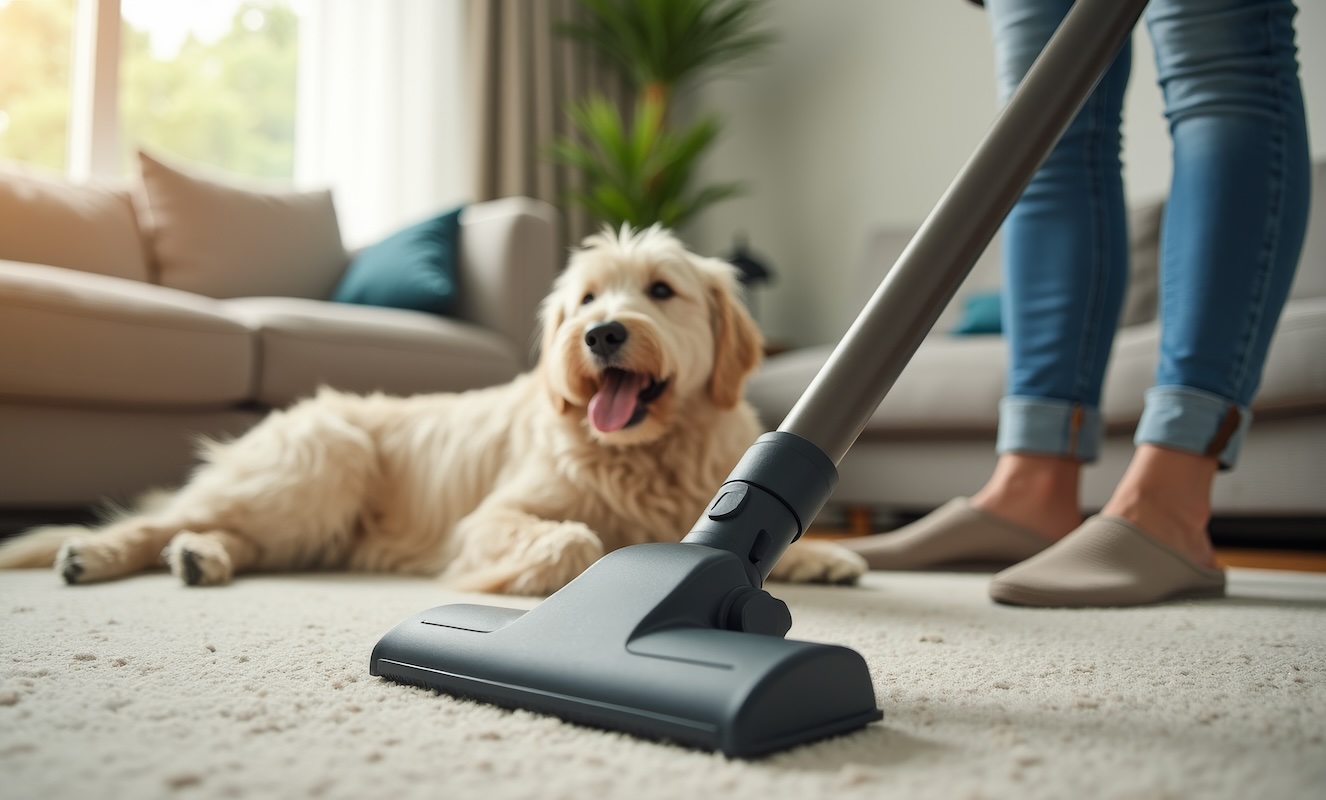
Pay special attention to entryways and high-traffic paths—basically wherever people (and pets) are tracking stuff in from outside. You’d be amazed how much pollen-laden dust gets deposited right by the front door or in hallways. A quick vacuum of your entry rugs or doormat every 1-2 days in spring can stop a lot of pollen from spreading further into the house.
Bedroom vacuuming is also important during allergy season: try to vacuum your bedroom carpet or rug a couple times a week, because that’s where you spend hours breathing the air. The same goes for any favorite spots your pets hang out (more on pets in a moment).
Remember, in Nashville we often deal with not just one “pollen wave,” but a series of them (first the trees, then grass, then ragweed…). Staying diligent with cleaning means each wave leaves less of a mark inside your home. Consistency is your friend. Many locals find that once they get into the habit of frequent vacuuming in spring, their allergy flare-ups indoors aren’t as intense.
Vacuuming Tips for Allergy Relief at Home
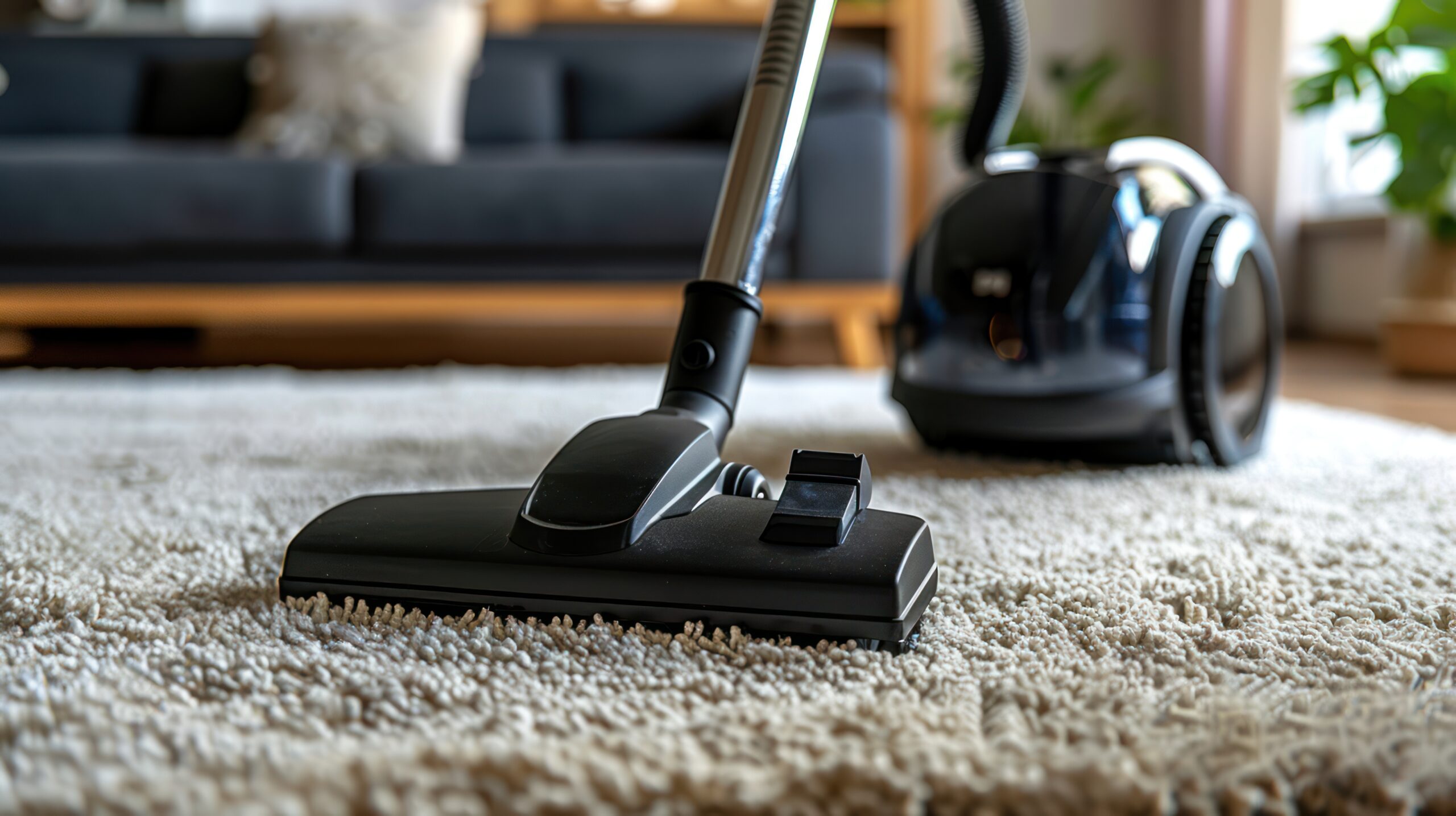
Okay, so you’re committed to vacuuming regularly—great! Now let’s talk technique and focus. How and where you vacuum can make a big difference in nabbing allergens. Here are some home cleaning tips tailored for Middle Tennessee allergy season. These will help you target the worst allergen hideouts in your house:
Start at the Door
Make your entryway a pollen-fighting zone. Vacuum the doormats, area rugs, and floor right at your entrances frequently. This is where a ton of dirt and pollen from outside gets dropped off by shoes. By cleaning that area, you prevent guests (and family) from constantly re-tracking pollen deeper into the house.
Tip: consider taking off your shoes at the door during heavy pollen season to reduce what gets tracked in—and vacuum around shoe racks or entry benches too.
Carpets & Area Rugs
Wall-to-wall carpet can hold a lot of allergens, so give carpets a thorough vacuum regularly. Go over high-traffic carpeted rooms slowly and in multiple directions to pick up maximum debris. For area rugs, don’t forget to vacuum underneath them occasionally as fine dust can sift through.
If your home has mostly hard floors, don’t think you’re off the hook—pollen can settle on wood and tile floors too. Use the floor attachment on your vacuum (or a vacuum that works on hard floors) to suck up that fine dust. In fact, a light vacuum over hard floors is often better than sweeping, because sweeping can just send particles flying back up into the air.
Upholstery & Mattresses
Pollen and dust don’t just stick to floors—they land on your couches, chairs, bed, and anywhere fabric is present. Use your vacuum’s upholstery attachment to clean soft furniture like sofas, armchairs, and upholstered headboards. Do this more often in spring when windows are open or after a day you’ve had the house open to breezes. For your mattress, try vacuuming it about once a month (or more if you have dust mite allergies).
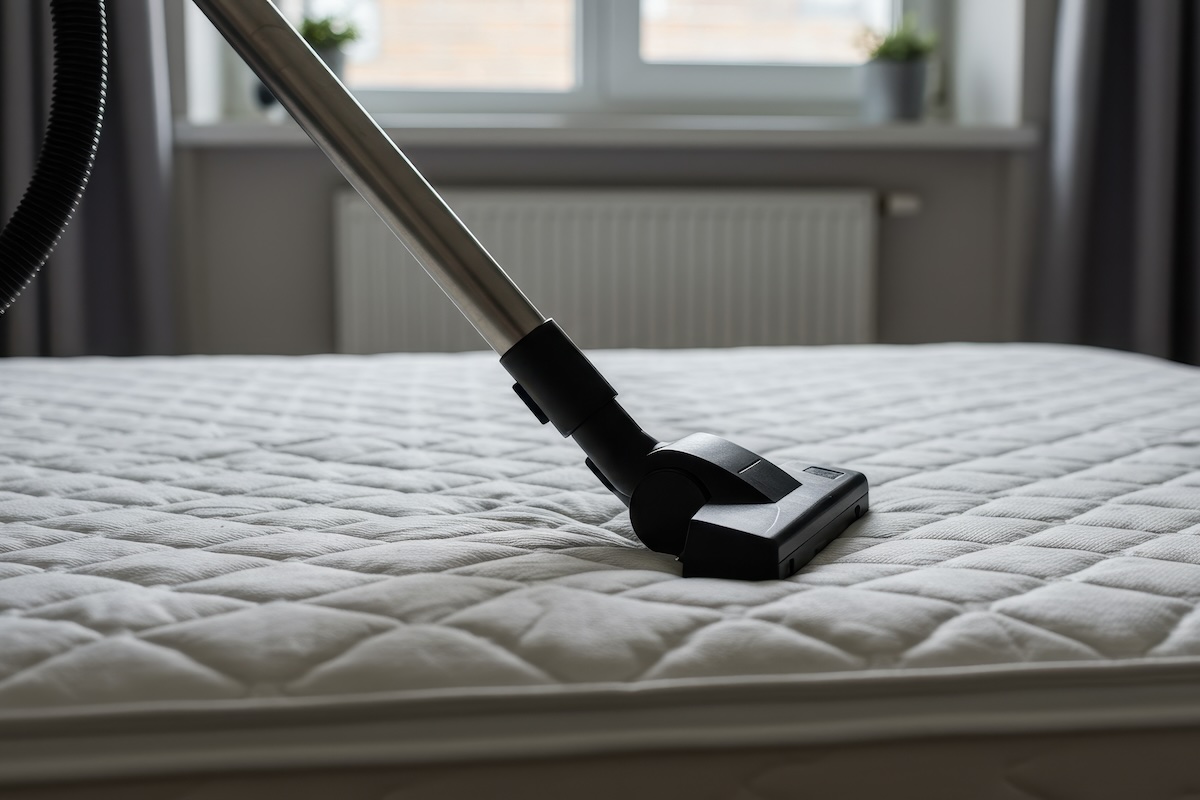
When you strip the sheets to wash them (which you should do weekly in hot water during allergy season), take a few minutes to vacuum the mattress surface. This helps remove dust mites and their allergens. In one scientific study, daily vacuuming of mattresses over eight weeks reduced dust mite allergen levels by about 85%—a huge drop. You don’t need to vacuum your mattress daily, but this shows how effective vacuuming can be at reducing allergens in bedding.
Curtains/Drapes
Often overlooked, your curtains are basically big filters that trap pollen and dust from the air. During peak pollen times, it’s a good idea to clean them. Many curtains can be vacuumed using a soft brush attachment—just gently run it over the fabric to suck away dust.
Some lightweight curtains are machine washable—cleaning them will remove allergens too. If you have blinds instead, use the vacuum brush or a duster on them, since dust can accumulate on slats.
Clean window sills and frames while you’re at it, because pollen can collect there when windows are open.
Pet Beds & Pet Areas
Our furry friends can unknowingly spread allergens. If your dog or cat goes outside, they can bring in pollen on their fur. Even indoor-only pets contribute dander. Make it a habit to vacuum your pet’s favorite spots: pet beds, the couch cushion Fluffy always naps on, the rug by the window where the dog sunbathes, etc.
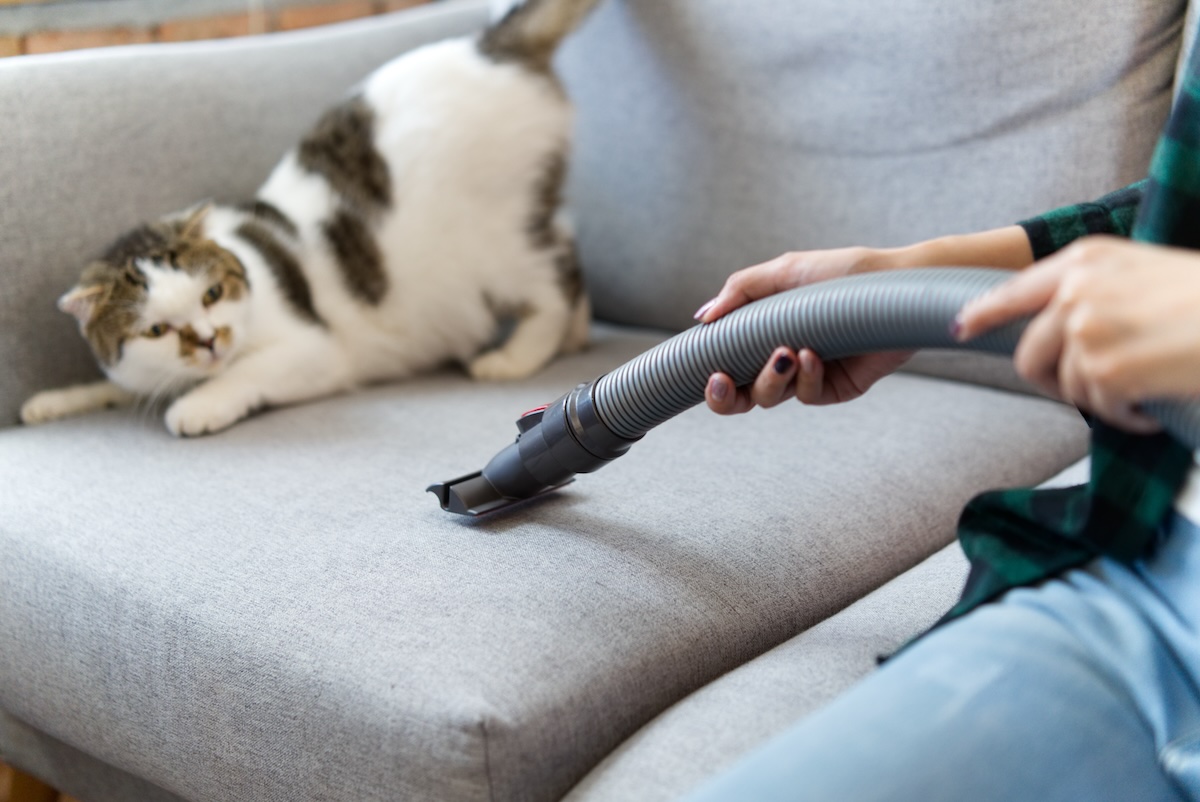
Use a turbo brush or upholstery tool on pet beds and try to do this weekly. You’ll pick up pet hair, dander, and any pollen hitchhikers.
Tip: For bonus points, wash pet bedding frequently in hot water to eliminate allergens. Also consider wiping down your pet’s coat with a damp cloth or pet wipe when they come in from outside, to capture some pollen before it falls off in your house!
By focusing on these areas, you’ll tackle the primary sources of indoor allergens. You’re basically cutting off the places where pollen and dust collect and linger. Many Nashville homeowners with allergies find that a top-to-bottom vacuum of entryway, floors, furniture, and beds right after a high-pollen day can prevent days of sneezing. It’s a bit of effort, but it pays off in comfort.
And again, always use that HEPA filter—vacuuming these spots with a non-HEPA machine could just redistribute the allergens. We want them in the vacuum, not swirling around in your living room!
High-End Vacuums: An Allergy Sufferer’s Best Friend
You might be wondering, “Do I really need a fancy vacuum for all this, or will my old budget vacuum do?” While any vacuuming is better than none, investing in a high-quality vacuum can make a world of difference for allergy control.
Premium models often have superior filtration, sealed construction, and convenient tools that standard vacuums lack. They’re designed with the allergy sufferer in mind. Let’s take a look at a few top-tier vacuum brands that Middle Tennessee homeowners turn to for cleaner air:
Miele
This German brand is well-loved because of their vacuum cleaners’ exceptional build quality and filtration. Miele vacuums feature an AirClean Sealed System, meaning they don’t leak dust. Most models use thick 9-ply dust bags plus a HEPA filter, working together to trap 99.99% of all particles down to 0.3 microns.
In plain terms, that covers virtually all pollen, dust mite waste, and dander.

Miele’s filters are independently certified to meet HEPA standards, and the vacuum casing is sealed with rubber gaskets—so all the air goes through the bag and filter. Many allergy sufferers notice the air smells noticeably fresher after vacuuming with a Miele.
These vacuums also have attachments for every task (crevice tools, upholstery brushes, etc.), which makes it easier to clean things like curtains and mattresses properly. They aren’t cheap, but their durability and performance make them a worthy investment if you’re serious about indoor air quality.
Aerus (formerly Electrolux)
Aerus is a company known for high-end vacuums with a long legacy (you might remember your parents or grandparents calling their vacuum an “Electrolux”—although Electrolux is still around… it’s complicated.).

The modern Aerus vacuums like the Lux Guardian Platinum are built specifically to create an ultra-clean environment. That model, for example, uses a unique double HEPA filtration system in a fully sealed design:
- First, the bag itself filters out a lot of dust (their multi-layer bags are said to be multiple times more effective than standard bags).
- Then a true HEPA filter traps 99.97% of any remaining particles ≥0.3 microns.
- Then it even passes air through a second HEPA filter before exhaust, just to catch any stragglers!
The end result is that only clean, purified air comes out of the machine.
Aerus units also often include activated carbon filters to remove odors—a nice bonus if pet or musty odors are a concern. These vacuums are sold through dealers and can be quite pricey, but for someone with severe allergies or asthma, they offer peace of mind that the vacuum isn’t leaking a spec of dust. They’re basically hospital-grade air cleaning on wheels.
Dyson
You’ve no doubt heard of Dyson—they’re famous for innovative bagless vacuums and futuristic design. Dyson vacuums do not use traditional disposable bags—instead they use cyclonic separation and filters. While Dyson doesn’t always advertise “HEPA certified” on all models, most of their newer vacuums have whole-machine filtration that meets HEPA standards in practice.

For example, Dyson’s cordless models from the V11 onward are fully sealed with multiple layers of filtration, capturing 99.97% of particles down to 0.3 microns. In other words, Dyson vacs can trap allergens just like a HEPA vacuum—the company notes that their machines are tested to ensure they expel only clean air.
One advantage of Dyson vacuums is their powerful suction and ease of use—they often come with motorized brush attachments great for pet hair on upholstery or stairs.
However, one thing to keep in mind: since Dysons are bagless, you must empty the dust bin manually, which can expose you to a puff of dust if not careful. Many Dyson owners with allergies empty the bin outdoors or inside a trash bag to minimize the dust cloud.

While Dyson might not have the official HEPA label on some models, you can be confident that a properly functioning Dyson is not spewing allergens (the key is that whole-machine sealed design). It’s a high-performing choice, especially if you prefer bagless convenience but still want allergy-friendly filtration.
Brands like Miele, Aerus, and Dyson have engineered their machines to trap the tiniest of allergens and to prevent leakage. They tend to maintain suction better as they fill up, and their attachments help you clean all those niche places (ceiling fans, baseboards, sofa cushions, you name it). For a Nashville homeowner or anyone dedicated to a clean, healthy home, these premium—or as some people call them, luxury vacuums—are often well-worth the cost. (Vastly fewer days with itchy eyes and congestion is pretty priceless!)
They not only remove more dirt from your floors, but also significantly reduce airborne irritants every time you clean. Of course, use what fits your budget, but if you’ve been struggling with indoor allergies, upgrading your vacuum can be a major improvement.
Maintaining Your Vacuum for Peak Performance
Buying a great vacuum is step one—step two is taking care of it so it can take care of your air. A well-maintained vacuum will do its job effectively, whereas a neglected one might start leaking dust or losing suction. Here are some friendly reminders to keep your vacuum in top shape for allergy-fighting:
- Replace or Clean Filters Regularly: The HEPA filter (and any pre-filters) in your vacuum needs periodic attention. Over time, filters become clogged with the particles they’ve trapped, which can reduce airflow or even start to leak. Check your vacuum’s manual for guidance, but generally HEPA filters should be replaced about every 6 to 12 months of regular use. Some higher-end vacuums have filter indicator lights or timestrips (for example, Miele gives you a little indicator that turns red when it’s time for a new filter). If your vacuum has washable filters (common in Dyson and some others), rinse them as directed (often monthly), and make sure they are completely dry before reinstalling. Keeping filters fresh ensures your vacuum continues to trap 99.97% of those allergens and maintains strong airflow.
- Empty Bags & Bins Before They’re Full: Don’t wait until your vacuum bag is busting at the seams or your bagless canister is packed to the brim. A too-full dust receptacle can reduce suction and increase the chance of dust leakage. A good rule of thumb for bagged vacuums is to change the bag when it’s about 2/3 full. Many modern bags are designed to seal shut when removed (to keep dust from escaping)—take advantage of that and toss them out promptly. For bagless vacuums, empty the bin when debris reaches the “max” line or sooner. Always empty dust and debris outside if possible (or in a well-sealed trash bag) to avoid releasing a plume of allergens back into your home. It might seem minor, but an overflowing vacuum can undo some of your hard work by leaking dust, so keep it tidy.
- Check the Seals & Gaskets: Once in a while, inspect your vacuum’s critical seal points. This includes the rubber gasket around the HEPA filter, the seal where the bag or bin attaches, and any hoses or connections. If you notice cracks, worn-out foam, or warping, that could let dust escape. On a bagless vacuum, ensure the dust bin is clicking into place firmly and any seals around it are clean and intact. For bagged units, make sure the bag collar is properly seated—some systems have rubber seals that the bag’s cardboard fits into. A tightly sealed vacuum is essential for maintaining that allergy-proof performance. If you ever smell dust or see a puff escape when you turn on the vac, that’s a clue something isn’t sealed right. Many vacuum cleaner issues can be fixed / repaired with simple part replacements (like getting a new gasket or filter cover).
- Mind the Brush Roll and Attachments: A tangled brush roll (the spinning brush at the base of many vacuums) won’t pick up debris efficiently. Every so often, unplug the vacuum and clear hair or threads wrapped around the brush. This keeps your vacuum cleaning effectively so it can capture all the allergens in its path. Likewise, check that the attachments and wands aren’t clogged with hair or dust. A clogged crevice tool could blow dust back out. Keeping the mechanical parts clean ensures maximum suction and prevents any “blowback” of dust.
- Service When Needed: High-end vacuums can last for many years if cared for. If you notice a drop in performance that you can’t resolve (despite emptying and filter changes) or if the motor sounds off, consider taking the unit for servicing. Sometimes a tune-up, a new belt, or a professional deep clean inside can restore your vacuum to like-new performance. Especially for premium vacs from manufacturers like Miele, Riccar, Sebo, and others, there may be service centers in the Nashville area that can help keep your investment running strong. Think of it like car maintenance—a little check-up can extend the life and efficiency of your allergy-fighting machine.
By following these maintenance tips, you ensure that your vacuum continues to be a reliable soldier in the war on allergens. A poorly maintained vacuum might still pick up visible dirt but could start leaking microscopic allergens—the very thing we want to avoid.
A well-maintained vacuum will consistently deliver the clean, filtered suction that made you buy it in the first place. It’s all about preserving that strong airflow and tight containment of dust.
Taking a few minutes to tend to filters and bags when needed will pay off with a healthier home environment. After all, the goal here is to maintain your sanctuary of clean air through all of Nashville’s allergy season ups and downs.
Final Thoughts
Nashville’s allergy season may be inevitable, but suffering inside your own home doesn’t have to be. By leveraging your vacuum cleaner—and using it wisely—you can create a comfortable haven even while the pollen clouds rage outside.
We’ve learned that a vacuum with good filtration (ideally HEPA) and a sealed design can capture the lion’s share of indoor allergens like pollen, dust mites, and pet dander, instead of letting them float around your living space. We’ve also seen that cleaning more frequently during peak pollen periods keeps those allergens from accumulating to sneeze-worthy levels. From entryway mats to all your carpets, hardwood, and tile, a thorough vacuuming routine can dramatically reduce your allergen exposure at home.
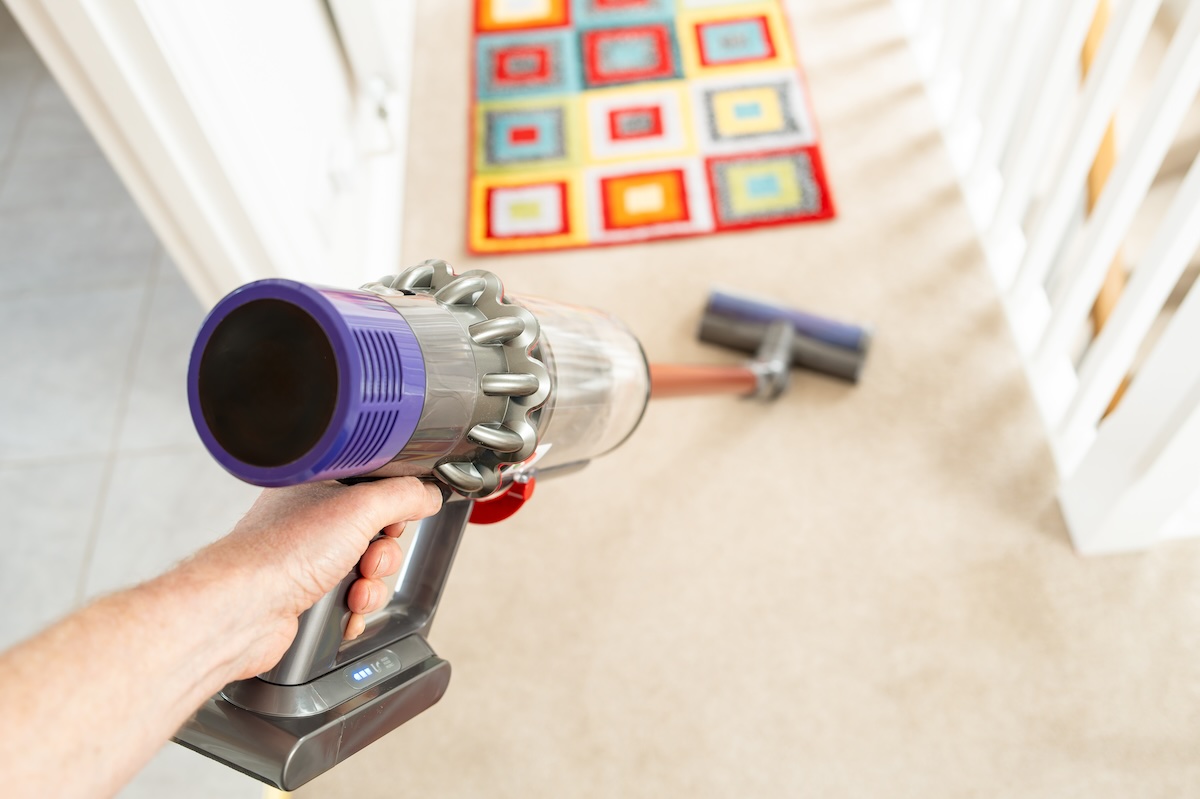
Think of vacuuming during allergy season as not just cleaning, but as an investment in your well-being. Each time you vacuum up that layer of pollen on the rug or dust on the sofa, you’re actively removing triggers that would otherwise be irritating your eyes and sinuses. Along with other smart habits—like keeping windows closed on high-pollen days and changing your HVAC air filters—having a good vacuum cleaner is a cornerstone of allergy management in Middle Tennessee. It’s proactive indoor air care.
Living in a city as green and alive as Nashville is wonderful, allergies aside. With the right cleaning tools (i.e. sealed HEPA vacuums) and some diligence, you can enjoy the beauty of our region without feeling like you have to fight nature at every turn. So, whether you upgrade to a Miele or a Dyson, or simply use your current vacuum more effectively, remember to vacuum more frequently as your secret weapon for spring survival. Your nose’ll feel better, your guests will notice the fresher air, and you might just reclaim some joy in the season instead of dreading it.
Here’s to breathing easier in your home—even when the Tennessee pollen party is in full swing outside.


